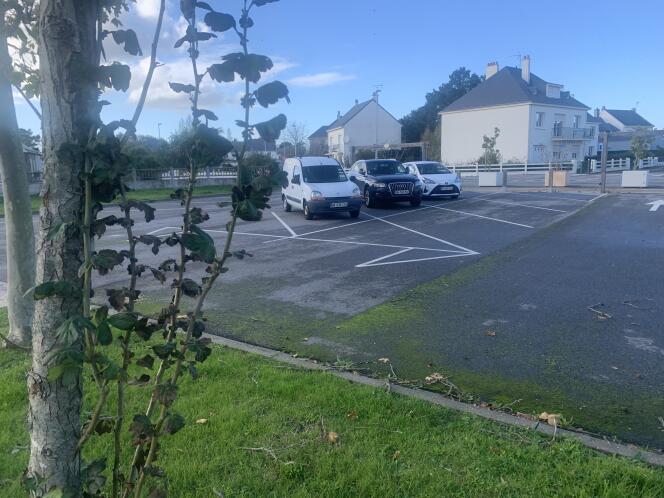TDon’t go to my parking lot! In Trignac (Loire-Atlantique), the residents of a district of this small suburban town near Saint-Nazaire do not want to see fifteen parking spaces located near their homes disappear. Built ten years ago, the site is just an ordinary expanse of asphalt decorated with white spiky bands. Moreover, it is not so much the removal of the spaces that poses a problem – parking nearby is not that complicated – as the nature of the project called to replace them: a development of tiny houses. A petition with 300 signatures was submitted to the town hall in mid-September to oppose its creation.
Accompanied by its share of fantasies and unsaid things, the affair is a cultural shock. On one side, retirees attached to La Gagnerie, named after this district mainly made up of small houses, built in the early 1970s to house employees of Chantiers de l’Atlantique. On the other, four households of people in their thirties and forties – five adults, with three children – having opted for lightweight housing in an ecological approach. The initiative came from them, at the beginning of 2022. Encountering serious difficulties in finding accommodation in an urban area with strong real estate pressure, they then approached the mayor (various left) of Trignac, Claude Aufort, to tell him about their idea : create an island intended for nomadic micro-houses. Faced with the objective of zero net artificialization, established to protect natural spaces, the elected official said “banco” and promised for 2025 a thirty-year long lease in place of the small Gagnerie car park.
The project leaders – mainly women – have since expanded their files. To the four tiny houses and mobile chalets envisaged (from 15 to 40 square meters) would be added a collective building including a laundry room, a bicycle garage, a common living room and a guest bedroom. An organic vegetable garden and a pond would enhance the adjoining mini-plain and stimulate local biodiversity. A play area would bring together the children of the neighborhood… Except that before that a project in the construction site will have to be undertaken: to be accepted by the neighborhood. “We feel that there is fear among the residents of the neighborhood. They worked hard all their lives to have their lodge. Seeing “tinys” arrive in front of their homes is an important change”recognizes Morgane Jaunay, the linchpin of future newcomers.
You have 45% of this article left to read. The rest is reserved for subscribers.
